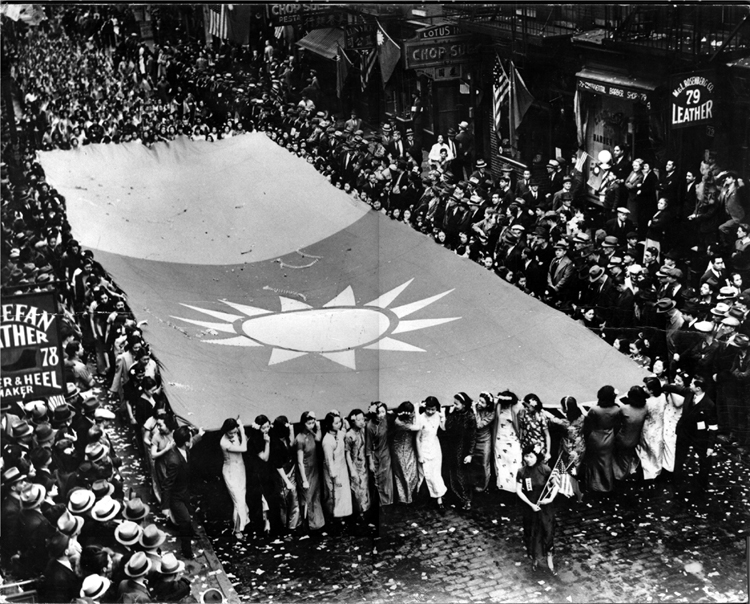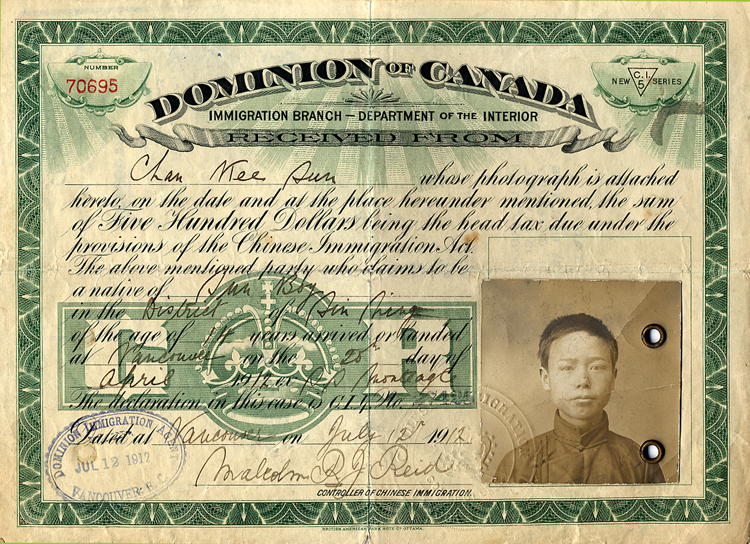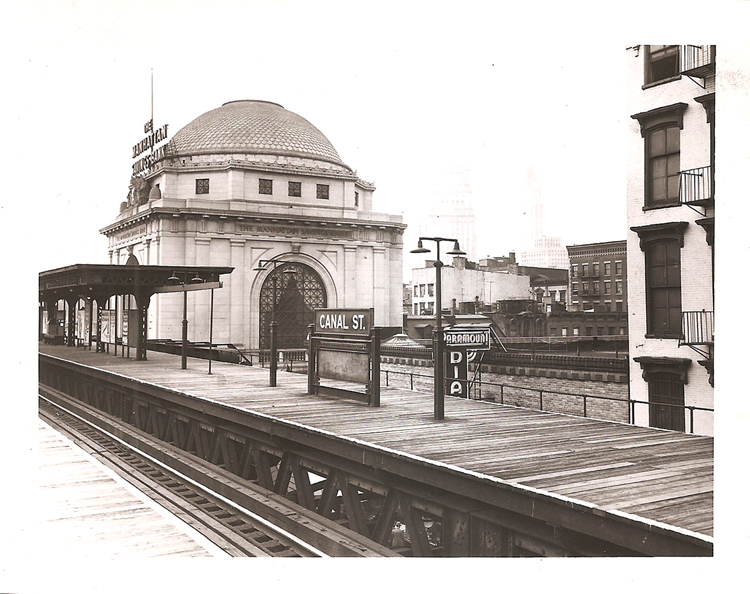After the Marco Polo Bridge Incident of 1937, the second Sino-Japanese War broke out in full scale. The concern among Chinese in America grew rapidly, especially for those who had family members left in China. These Chinese Americans not only faced constant discrimination within the United States, but following the incident felt further abandoned by international society. On May 9, 1938, Chinese Americans in New York took part in a parade to make their voices heard and to raise money for the Chinese efforts against the Japanese. Marchers used slogans like “To Save China, To Save Ourselves,” connecting their quest for equal rights in the U.S. to the survival of Chinese nationals in China. Here, women wearing traditional cheongsams carry a gigantic Chinese Nationalist flag as both a patriotic symbol and a practical container for catching donations thrown by the crowd.
Collections馆藏Collections馆藏Collections馆藏Collections馆藏Collections馆藏Collections馆藏Collections馆藏Collections馆藏Collections馆藏Collections馆藏Collections馆藏Collections馆藏Collections馆藏Collections馆藏Collections馆藏Collections馆藏Collections馆藏Collections馆藏Collections馆藏Collections馆藏Collections馆藏Collections馆藏Collections馆藏Collections馆藏Collections馆藏Collections馆藏Collections馆藏Collections馆藏Collections馆藏Collections馆藏Collections馆藏Collections馆藏Collections馆藏Collections馆藏Collections馆藏Collections馆藏Collections馆藏Collections馆藏Collections馆藏Collections馆藏Collections馆藏Collections馆藏Collections馆藏Collections馆藏Collections馆藏Collections馆藏Collections馆藏Collections馆藏Collections馆藏Collections馆藏Collections馆藏Collections馆藏Collections馆藏Collections馆藏Collections馆藏Collections馆藏Collections馆藏Collections馆藏Collections馆藏Collections馆藏Collections馆藏Collections馆藏Collections馆藏Collections馆藏
Parade Rally in NYC Chinatown Chinese Americans against Japanese invasion in China (May 9, 1938)

28 June 2019 Posted.
Parade Rally in New York City Chinatown, Chinese Americans against Japanese invasion in China, a fundraising parade for China relief, from the left in the front, Annabelle Wong (the 4th ). Ruth Chin (the 5th ), Sophia Chu (the 6th ), Jeaw Yee Wong (the 7th ), Grace Chu (the 9th ) were recognized, May 9, 1938.
Courtesy of Warren Chan, Museum of Chinese in America (MOCA) Collection.
纽约唐人街的游行聚会,美国华人反对日本入侵中国,一场救济中国的筹款游行,前排左四Annabelle Wong, 左五Ruth Chin,左六Sophia Chu,左七Jeaw Yee Wong,左九Grace Chu,1938年5月9日。
美国华人博物馆(MOCA)馆藏

